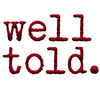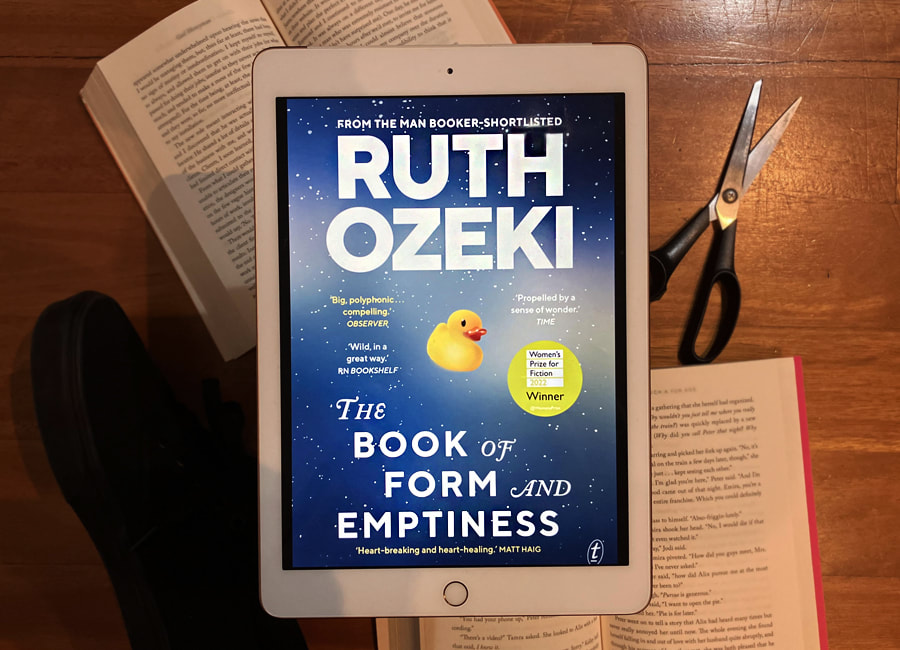|
Published by Text Publishing September 2021 | Fiction Unless you’re familiar with Zen Buddhism, the nod to the philosophy’s teachings in the title of Ruth Ozeki’s latest novel – The Book of Form and Emptiness – may not have jumped out.
It’s only when you’re deep into the novel that hints emerge of the author’s interest in Buddhist concepts of “form” and “emptiness” – and this makes sense when you realise its American born author was ordained as a Soto Zen Buddhist priest in 2010. Yet while it is a philosophically serious novel exploring big themes including neuro-divergence and consumerism, it’s also playful in its form as it merges Zen parable with meta fiction. It’s also endearingly offbeat in its telling of the poignant tale of its protagonists – teenager Benny Oh and his mum Annabelle. Benny and Annabelle’s lives are, quite bluntly, in a mess. A year earlier, they lost Benny’s dad Kenji, after the jazz musician was run over, in circumstances as amusing as they were heart-breaking: a truck carrying chickens mistook him for a bag of garbage as he lay, stoned, in the lane near their house. Since his dad’s death, Benny begins to hear the voices of all the objects around the house - a sneaker here, a Christmas ornament there, a window pane, a pencil, scissors. Some objects are pleasant, others are snide or angry or full of pain. At the same time, as his mum Annabelle struggles to navigate life without Kenji, she develops a hoarding problem, a response to her grief and her need to surround herself and her son with comforting stuff, like snow globes and teapots. But as the objects in their home multiply, their voices grow more clamorous for Benny. The effect on his behaviour causes his school to send him to a psychiatrist who diagnoses him with “schizoaffective disorder,” prescribes heavy drugs and sends him for a stint in a psychiatric institution. As he seeks refuge in the silence of a large public library, Benny discovers a new world. He meets an eclectic cast of characters, including a homeless Slovenian poet philosopher and a mesmerising young performance artist, who teach him to view his voices in a different way by asking important questions. In doing so, he hears the most authoritative voice of all – that of a book. His book. The book of the novel’s title, who, literally, narrates Benny’s story, while also serving as his instructor. Through this sentient book’s teachings and shrewd (although sometimes overbearing and conceited) observations, Ozeki guides the reader to consider many conundrums, top of the list being to question the long held judgements made by society on people with psychological “difference” and to examine the deep effects of society’s relationship with “stuff” – the objects we don’t need, but buy and then find it hard to let go of. Where Ozeki shines in this novel is in her humorous, plausible portrayal of how both Benny and Annabelle grapple with their seeming dysfunction. However, just like Benny and Annabelle’s home, I found the novel to be unnecessarily cluttered. Extraneous plot points and characters complicate, rather than add to, the story – like the chapters dedicated to the Zen author channelling contemporary Japanese organising consultant, Marie Kondo who pens the self-help book that almost turns Annabelle’s life around. Although the points made are important, I found myself skimming through these chapters, annoyed that it was getting in the way of the central story (not to mention it blew the book out to more than 500 pages). Despite this criticism, Ozeki – who was raised in Connecticut by an American father and Japanese mother, and whose third novel A Tale for the Time Being was shortlisted for the 2013 Man Booker Prize – goes a long way to turning a simple story about poverty, mental health and grief into a celebration of human difference. Comments are closed.
|
Categories
All
Archives
May 2024
|

